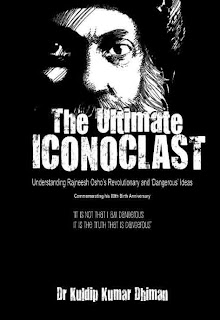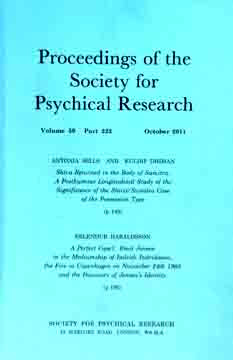THE ULTIMATE ICONOCLAST
Reviews — 10 August 2012
 Review of the book by Dr. Kuldip Kumar Dhiman on Understanding Rajneesh Osho’s Revolutionary and Dangerous Ideas.
Review of the book by Dr. Kuldip Kumar Dhiman on Understanding Rajneesh Osho’s Revolutionary and Dangerous Ideas.Review by Dhyanam in Osho News
After 33 years of reading and listening to Osho, I have come to believe His words: I am leaving something really terrible for scholars. They will not be able to make any sense out of it. They will go nuts; and they deserve it, they should go nuts. But nobody can create an orthodoxy out of me, it is impossible. (From Personality to Individuality, Chapter 8)
That is, until now. I have just finished an amazing book by Dr. Dhiman, in which he collects Osho’s words – contradictions, ideas, advice, suggestions – and describes, organizes, and analyzes Osho in a profound, spot-on book. Although the cover and title are not especially inviting, I find this book a great read. Dr. Dhiman has done a superb job of explaining the inexplicable, the inexpressible.
In the introduction to the book he clearly states the difficulty he faced: Rajneesh’s entire philosophy, as we shall see later in the book, was to go beyond dogmas, categories, and isms. […] That is why the moment you tried to associate Rajneesh with some religion, dogma, or philosophy, he would say something preposterous to shatter your image of him. Most thinkers are misunderstood for no fault of their own, but Rajneesh often deliberately created misunderstanding about himself.
The book is divided into five main sections. I especially liked the first one, “Problems of Language and Knowledge,” in which Dr. Dhiman discusses in detail the limits of language, a conundrum mystics along the ages have faced. As Dr. Dhiman says, “Rajneesh was himself a master of the language. If you listen to his recordings, especially his discourses in Hindi, you would be awe-struck by his extraordinary oratorical skills. Words flow from his mouth like a vibrant mountain stream with all its glory and music. In spite of the poetic use of language, he reminded listeners repeatedly that although language may be a very powerful tool, it has severe limitations. He argued that the ultimate truth is unspeakable because no language in the world can ever express it.”
Other chapters in the book deal with Osho’s attitude to the body (“the first step for the seeker”), His incredible contributions to psychology, His shocking (for India) comments about sex, the revolutionary concept of Zorba the Buddha, and on and on. I thought that even the epilogue was a must-read and particularly enjoyed the P.S. to it: The aim of this book was to present Rajneesh Osho’s revolutionary ideas in one book, in the hope of encouraging the reader to explore the original work. I only hope I have not added to the immense confusion created deliberately by the redoubtable Rajneesh himself.
Dr. Dhiman has clearly done his homework and is very well acquainted with Osho’s work. Although he has an impressive academic background – he holds degrees in graphic design and English literature, plus a doctorate in philosophical psychology – I can assure those of you who equate “academic” with “boring” that this is not a dry book at all. I thoroughly enjoyed it.
Dhanyam, first published in VIHA Connection
http://www.oshonews.com/2012/08/the-ultimate-inconoclast/

